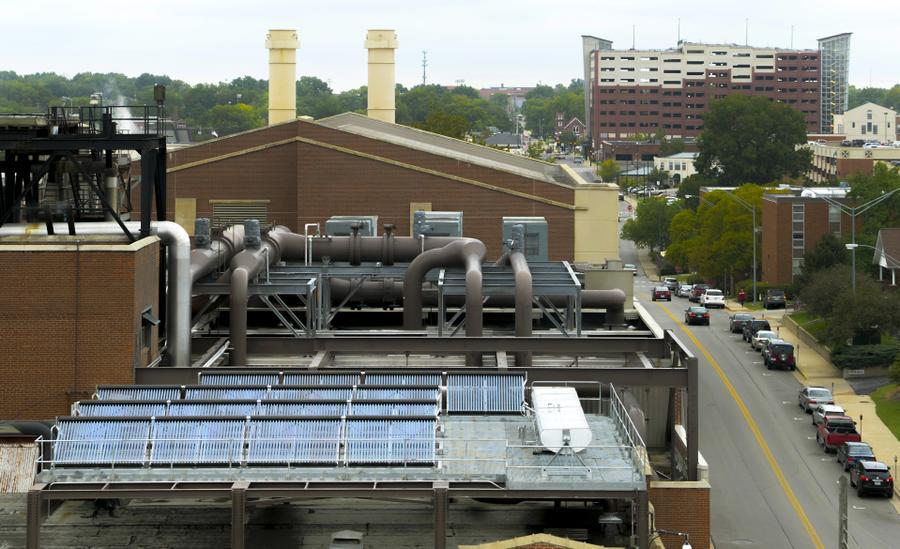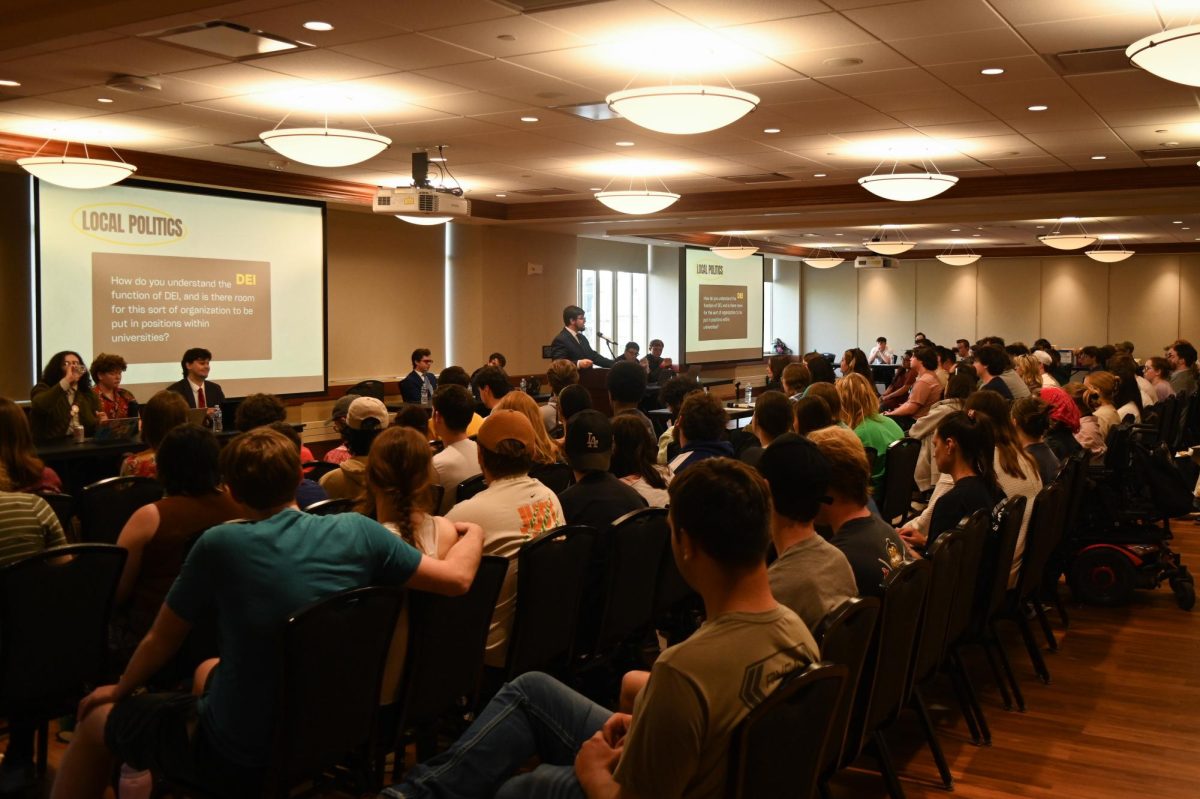Solar energy advocates are excited about a proposed expansion of Columbia’s solar fields, but some have raised fears about the project’s feasibility amid the city’s budget woes.
“We are looking to expand solar utility projects,” said Connie Kacprowicz, spokesperson for Columbia Water and Light. “With the federal tax incentives and solar rebates, we’ve seen a big increase in interest from Columbians.”
The City Council voted Sept. 2 to appropriate $500,000 to expand the West Ash solar fields, with the remainder of the $600,000 coming from rate increases to utilities in 2015. Fifth Ward councilwoman Laura Nauser and Mayor Bob McDavid cast dissenting votes in the 5-2 decision and raised fears about the project’s costs and viability.
The West Ash solar field, located on Bernadette Drive and Tiger Lane, produced 41,420 kilowatt hours in 2013, out of the city’s total 2013 solar power production of 544,060 kWh, according to a city news release. Kacprowicz said the proposed expansion would add 250 kW of solar energy. That would increase Columbia’s current solar power capacity by 50.5 percent, and the city’s total output by 0.03 percent.
According to the city’s annual Renewable Energy Report, despite the addition of 11 net-metered solar units in 2014, solar energy still makes up less than one percent of Columbia’s energy capacity. Other renewable resources like wind turbines, landfill gas and burning wood chips make up another six percent of Columbia’s energy portfolio. Kacprowicz said the different forms of renewable and fossil fuel energy tend to balance each other out.
“Most fossil fuels can be turned on or off, and retain a pretty high rate of reliability, around 90 percent, whereas most forms of renewable energy are more intermittent,” she said. “We always have to have an alternative form of energy to back the renewable (form) up.”
The city leases solar projects from Free Power along the COLT railroad line, and operates installations at Quaker Oats, Bright City Lights and the West Ash Pumping Station, according to the Renewable Energy Report.
Additionally, the city has net-metering agreements with 30 individuals who have built their own solar panels. In a net-metering agreement, Columbia Water and Light pays the customer’s current electric rate for the electricity generated by the customer’s solar panels. That money is credited to the customer’s monthly utility bill.
“As of (Sept. 10), we have 30 net-metering customers, and the total amount of energy is 160 kilowatts, (which) is what their total rated capacity is,” Kacprowicz said. “That’s up quite a bit last year (from) 19 customers producing 108 kilowatts.”
Tom O’Connor, a member of the Water and Light advisory board, has installed solar panels on his own home under a net-metering agreement. He now operates a net-zero household, meaning that his solar panels produce more energy than his household consumes.
“On the Water and Light board, a lot of what we keep pushing is, ‘Let’s buy more renewable energy,’” O’Connor said. “Generally, (renewable energy) is a forward-thinking solution, and solar power, in my mind, is a benchmark by which you judge renewable energy.”
Producing the power in Columbia saves a good amount of money, he said.
“There is a hierarchy of things you want your power to be,” O’Connor said. “One is that it’s owned by your local utility, two is that it’s renewable, and three is that it keeps the money local. We spend $80 million out of town every year to buy energy. So, if you’re looking at the big picture, you want to keep that energy in your pocket.”
Nauser said she opposed the appropriation of city funds for the project.
“I support our renewable energy portfolio, but I don’t feel like this project is a wise investment for our taxpayers and our rate-payers to expend that money for an experiment,” Nauser said.
She said if the council asks for that increase in rates, the council should be able to prove the program’s reliability.
“Solar is still in its infancy,” Nauser said. “The renewable energy market is not growing as fast as we would hope. Renewables are good, but they have their share of problems.”
She said she would prefer private companies take ownership of energy production, rather than the city subsidizing production.
“We just have to draw the line on what we should and should not be doing,” Nauser said. “I’m concerned when you start using rate-payer money to invest in private projects. You’re gambling with rate-payer money.”
O’Connor dismissed fears that Columbia’s budget gap is too big to take on any additional projects. He said Water and Light budgets about $120 million annually for electric utilities. Compared to that sum, he said, the $600,000 cost of the proposed West Ash solar expansion is small.
“It’s all upfront,” he said. “But, really, there’s no extra cost to it. It’s just upfront.”
O’Connor said he believes that the expansion of the West Ash solar field will be good for Columbia. He said the West Ash project has every characteristic that he would hope for in an expansion of the power utility, and, in the short run, meeting Columbia’s energy requirements. He wants that increased load to be renewable.
“We’re Columbia, Missouri, and we put up solar panels,” O’Connor said. “Deal with it.”






